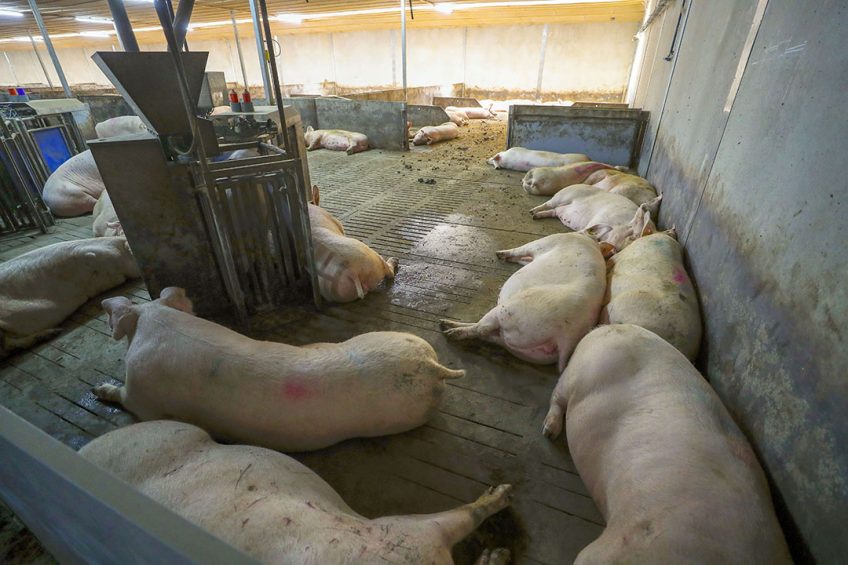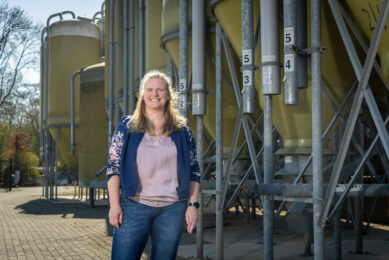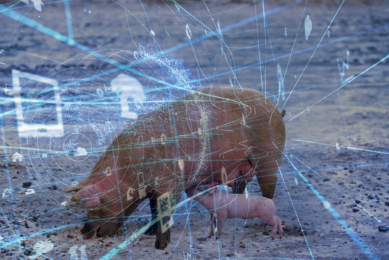Sow numbers in the Netherlands drop by 70,000

In the first 10 months of 2020, the number of sows in the Netherlands came down by roughly 70,000 animals. The reason for that is a so-called ‘remediation’ policy, where producers are invited to be bought out, using subsidies.
The reduction, an estimate by at least 2 artificial insemination companies, mostly took place in July and August, when 50,000 sows were taken out of production. Sows were also taken out of production in November. This brings the total to 75,000 less sows than in January, or an 8% reduction compared to the beginning of the year. There will still be roughly 800,000 sows left in a relatively urbanised and densely populated country, the size of Kentucky.
As from early 2021, the reduction of the sow numbers will also lead to a significant drop in weaner supplies. On a yearly basis, this could mean a difference of roughly 2 million weaner pigs. As the current market for weaner pigs is relatively tough, a reduction of the amount of sows may likely contribute to a quicker recovery.
Ongoing nitrogen crisis in the Netherlands
The remediation plans are part of a wider set of measures to overcome an ongoing nitrogen crisis in the Netherlands. In 2019, previously existing legislation around nitrogen deposition in the Netherlands was overthrown. The Netherlands Council of State, an advisory body to the government and parliament, considered it to be at odds with Natura 2000, a European network to protect the environment. According to EU rules, the 162 Dutch areas under the network need to be protected. It is known, however, that high levels of nitrogen compounds in the soil will favour certain types of plants and damage others, eventually creating a loss of biodiversity.
The practical consequence of the overthrowing of existing nitrogen legislation was that about 18,000 future construction projects were at risk, as permission procedures had to be frozen for the time being. New emergency legislation needed to be made and a first and easy step was to reduce the maximum speed limit at motorways to 100 km/h during daytime, but it was clear that more measures were needed.
Agriculture as a way out of the nitrogen problem
The authorities have since looked towards agriculture as one of the possibilities to further reduce nitrogen emissions. The remediation is one of the initiatives – a potential change in dairy cow diets was another.

Both in 2019 and – when possible in times of Covid-19 – in 2020, angry farmers drove in tractors to The Hague, where the government resides, to express their disgruntlement. They feel the government looks in their direction too often, when it comes to finding solutions and claim the authorities favour construction over farming.
The remediation subsidies: € 455 million
Initially, an amount of € 180 million was made available for the purpose of odour reduction initially. In June, agriculture minister Carola Schouten increased the available subsidies from € 180 million to € 455 million for remediation purposes. Schouten is known to advocate a transition towards a more circular economy. The Dutch parliament will vote about the total set of measures tackling the nitrogen crisis on Tuesday, December 15. It is expected that the bill will be passed.

Not so much interest in stopping
Early November, a total of 407 interested pig farms were counted that met all requirements. That number is slightly lower than Schouten had anticipated. Not every pig producer who received a subsidy invitation by the authorities, applied for the stopping subsidy. A part of the potentially stopping farms have received additional time to think about it. Schouten will be able to make a total overview by the end of the year, when it will be clear exactly how many pig producers will participate in the remediation’s subsidies.
So far, it appears that sow farms in particular have expressed interest to participate. It is unclear how many finisher pig places might disappear. The first estimates range between 300,000 and 350,000 places.
New market balance is likely
All in all, the situation will lead to a new market balance. Most likely, effects will be a reduction of exported weaners. Currently the Netherlands is exporting roughly 6.5 million weaner pigs – experts expect a reduction by 20%.
Internationally, however, it is likely that the demand for weaner pigs will grow again in the longer term. In Germany, the most important trading partner for the Netherlands, the effects of the combination of African Swine Fever and Covid-19 are dearly felt. On top of that, as from January 2021, it is compulsory to apply anaesthesia during castration. Add to that an increasing amount of welfare demands, and the number of sow farms may likely go down in Germany as well.
With input by Kees van Dooren en Mariska Vermaas.












